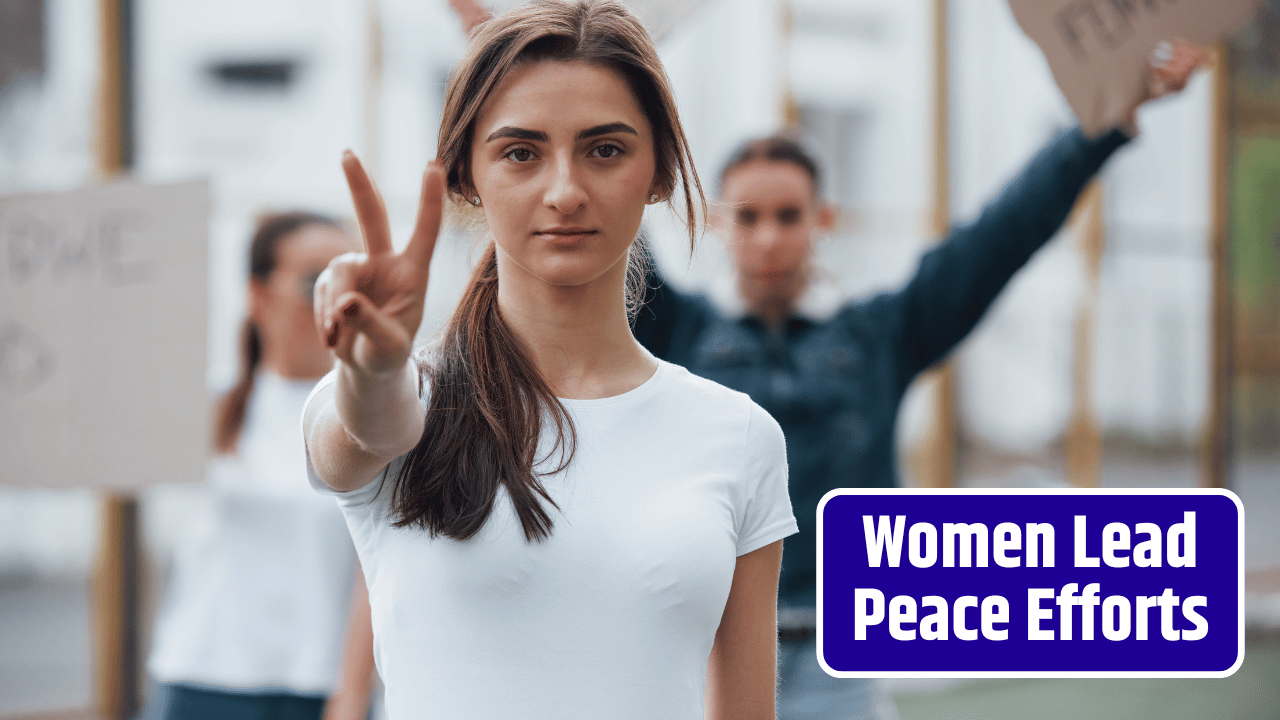Well, it seems the world is finally catching on. A newly unveiled global policy framework now explicitly pushes for women-led conflict resolution strategies. And honestly, it’s a long-overdue acknowledgment that women aren’t just victims in conflict scenarios—they’re also critical problem-solvers, peacebuilders, and decision-makers.
Table of Contents
Why This Shift Matters Now More Than Ever
Conflict resolution isn’t merely about ending fights. It’s about sustaining peace. And let’s face it: historically, peace negotiations have largely been male-dominated, often militaristic, and—frankly—less than successful in ensuring lasting peace.
Statistically speaking, the evidence for involving women is pretty convincing. The Council on Foreign Relations found that peace agreements involving women negotiators have a whopping 35% greater chance of lasting at least 15 years. Think about that. 35%! In any other sphere—business, health, education—we’d leap at that sort of advantage. Yet, in conflict resolution, we’ve long overlooked it.
Quick Reality Check: How Badly Have We Missed the Mark?
Let’s quickly glance at how drastically women have been underrepresented so far:
| Aspect of Peace Negotiations | Percentage of Women Participants |
|---|---|
| Mediators | Less than 5% |
| Negotiators | Around 10% |
| Witnesses & Signatories | Under 5% |
| Senior leadership in peace processes | Less than 8% |
Honestly, these figures are embarrassing. No wonder so many peace agreements fail to last—half the population’s perspective is largely ignored!
How Exactly Does the New Framework Propose to Change This?
Well, thankfully, the new global policy framework isn’t just vague declarations and promises. Instead, it sets out clear, actionable steps:
- Mandated Representation: Establishing quotas to guarantee women’s meaningful presence at all stages—negotiation, mediation, and peacebuilding.
- Dedicated Funding: Allocating targeted resources to train, empower, and support women peacebuilders practically.
- Capacity-Building: Developing specialized training and mentorship programs to prepare women leaders in conflict zones.
- Monitoring & Accountability: Regular assessments to ensure real progress, not just symbolic appointments.
Not Just Ethical—But Logical
Let’s be clear: this isn’t some charity mission. Including women leaders in peace processes isn’t just ethically right—it’s strategically brilliant.
Women peace negotiators often approach conflicts differently. They’re more likely to include provisions for social justice, education, healthcare, and reconciliation—elements crucial for lasting peace. Simply put, their approach is more holistic, collaborative, and sustainable.
Take the case of Liberia, where women played a decisive role in negotiating and implementing peace. The success of the peace agreement there is largely attributed to women’s involvement and influence.
The Challenges Ahead: Culture, Mindset, and Resistance
Let’s be honest, though. Implementing this framework isn’t going to be smooth sailing. Cultural biases run deep, and patriarchal structures won’t vanish overnight. Moreover, powerful interests accustomed to traditional (male-dominated) approaches might resist actively.
Yet, this push toward women-led conflict resolution isn’t merely progressive idealism—it’s grounded in clear evidence and pragmatism. It’s high time we embraced it fully.
India’s Opportunity to Lead
Now, bringing it closer home—where does India fit in this scenario?
Our track record in conflict mediation internationally has been pretty limited, and domestically, women’s representation remains patchy at best. But we have powerful, inspiring women leaders at grassroots and national levels who’ve proven their capacity for mediation and peacebuilding.
Why not leverage that strength internationally? Imagine the diplomatic and moral credibility India could gain by championing women-led conflict resolution globally. It’s an opportunity begging to be seized.
Ultimately, the new global policy framework represents a seismic shift—recognizing women not just as victims but as powerful agents of change. But here’s the catch: declarations alone won’t achieve peace. Real change will depend on action, accountability, and relentless advocacy at every level.
So let’s hold leaders accountable, challenge biases, and elevate women’s voices—not just for ethical reasons, but because it genuinely makes the world safer, fairer, and more stable for everyone. Because, after all, isn’t peace what we’re all striving for?
FAQs
Why is women-led conflict resolution critical?
Women’s participation improves peace sustainability, inclusivity, and effectiveness—resulting in more lasting peace agreements.
Do women negotiators actually make peace agreements last longer?
Yes, research indicates peace agreements involving women have significantly higher longevity and stability.
How will the new policy framework ensure implementation?
Through mandated quotas, specific funding allocations, training programs, and strict accountability and monitoring mechanisms.
What role can India play in global women-led peacebuilding?
India can use its diplomatic influence, encourage women’s leadership in negotiations, and champion gender-sensitive peacebuilding strategies on international platforms.














